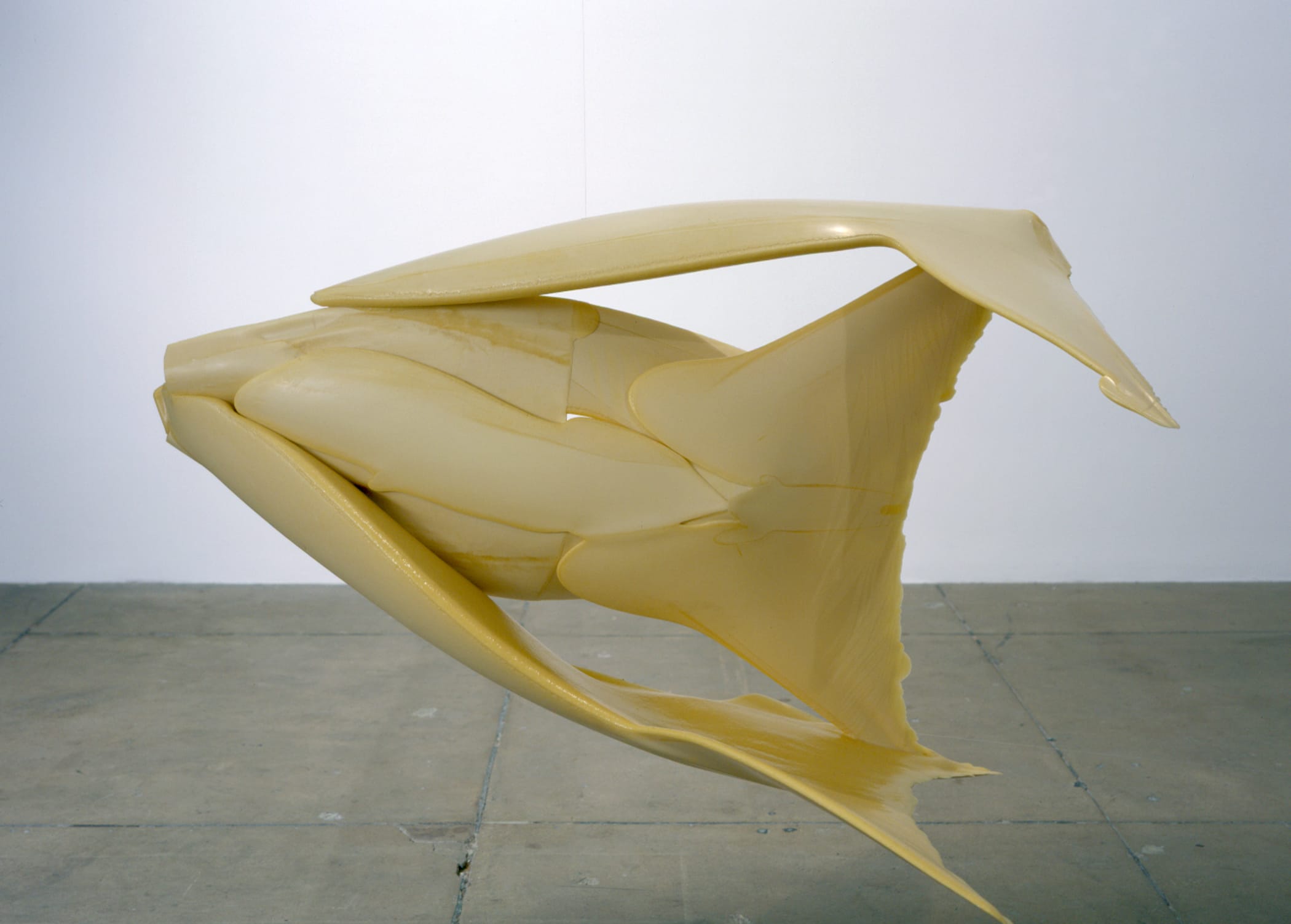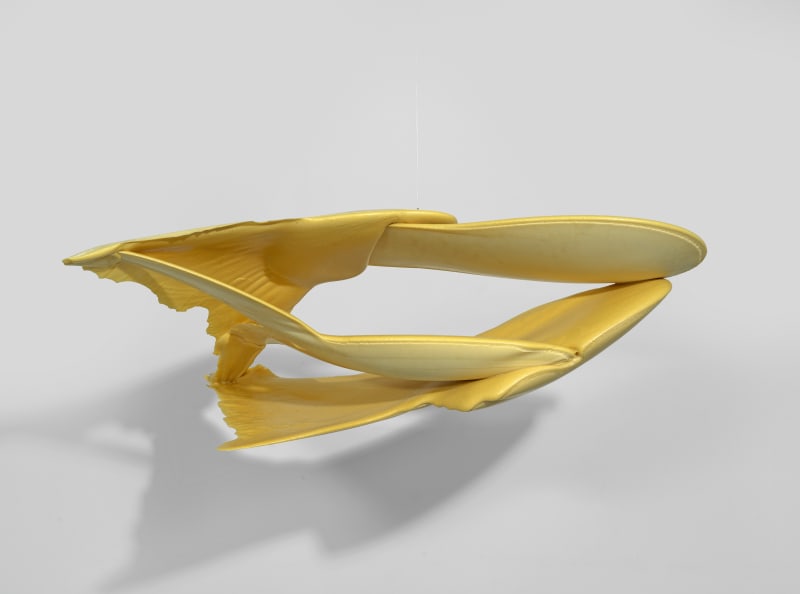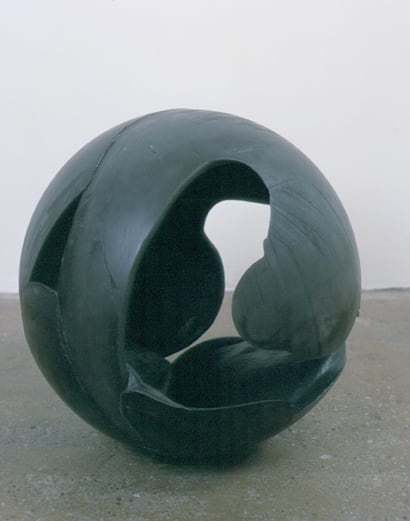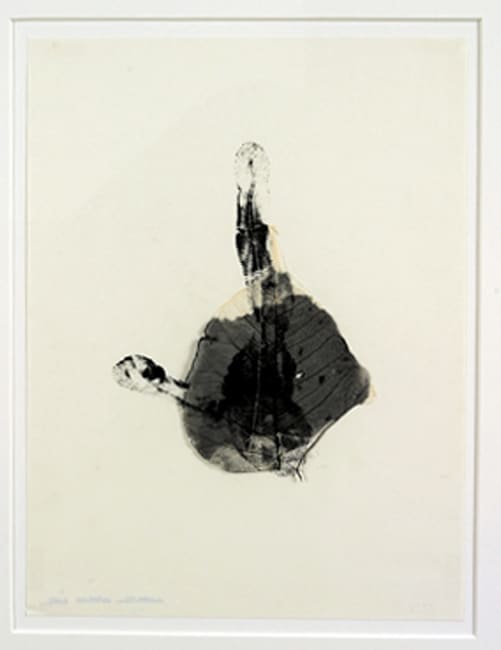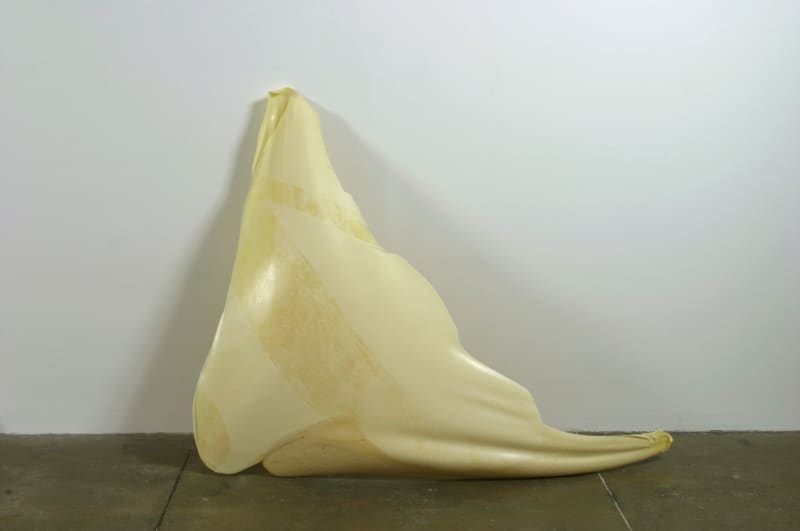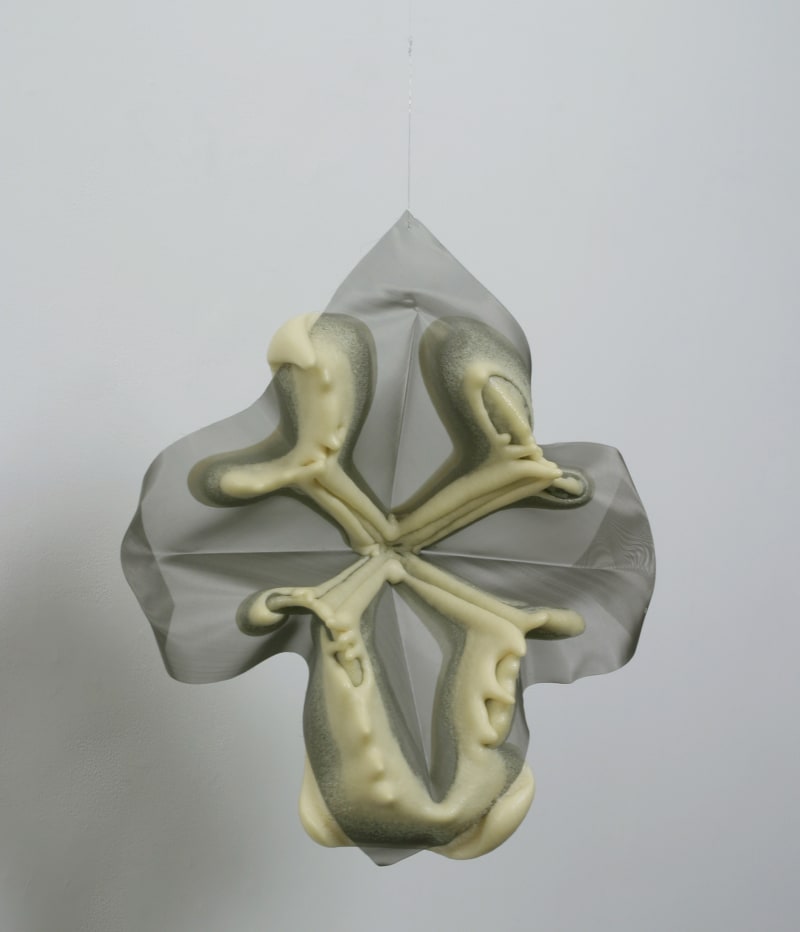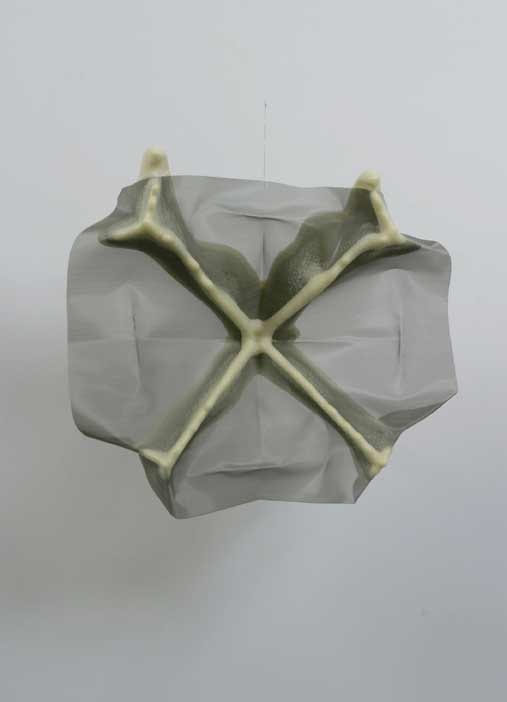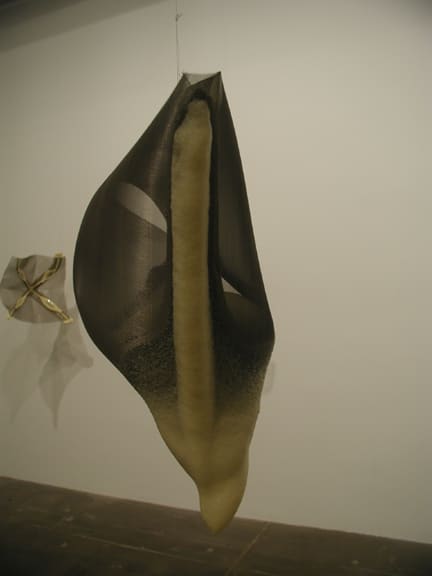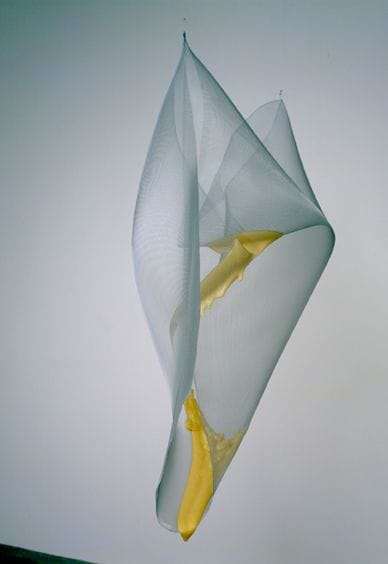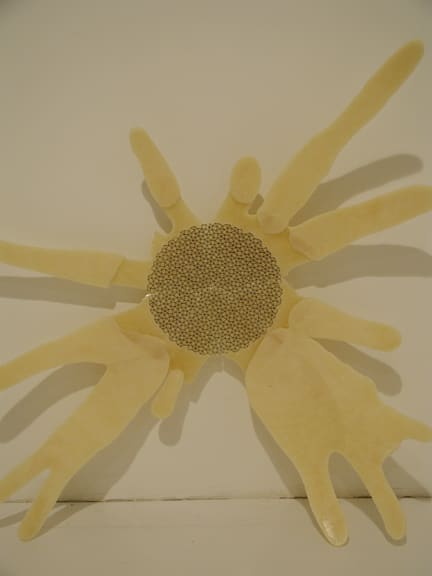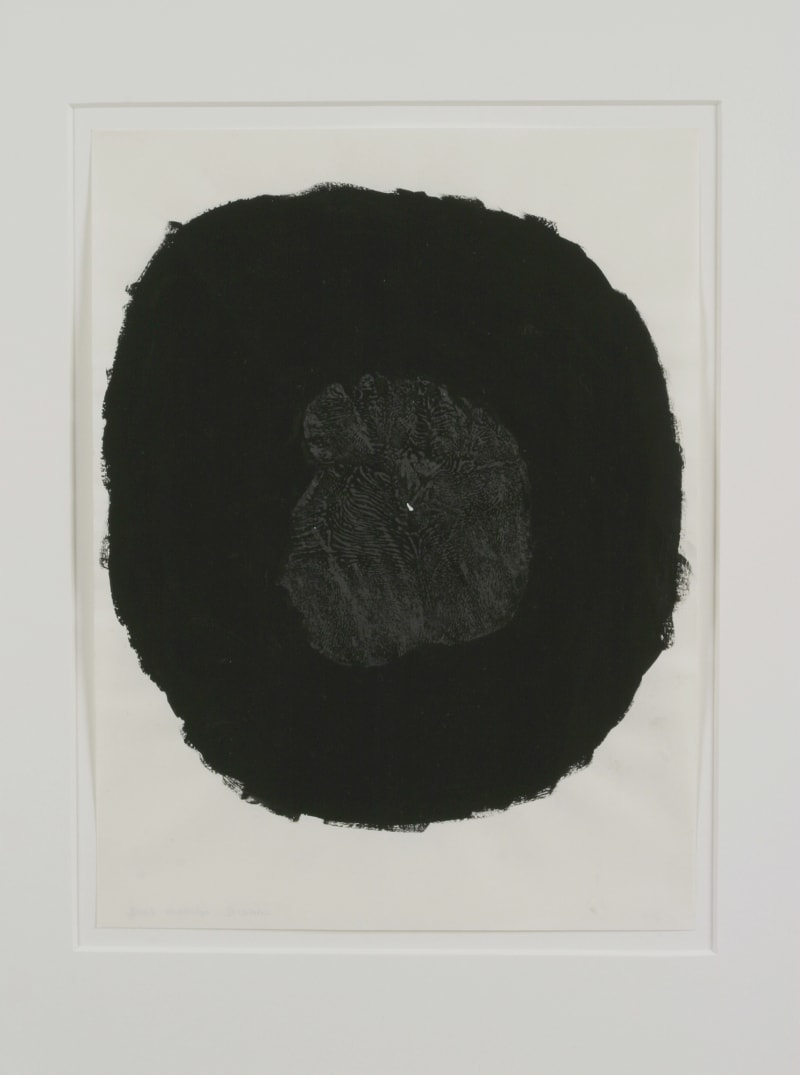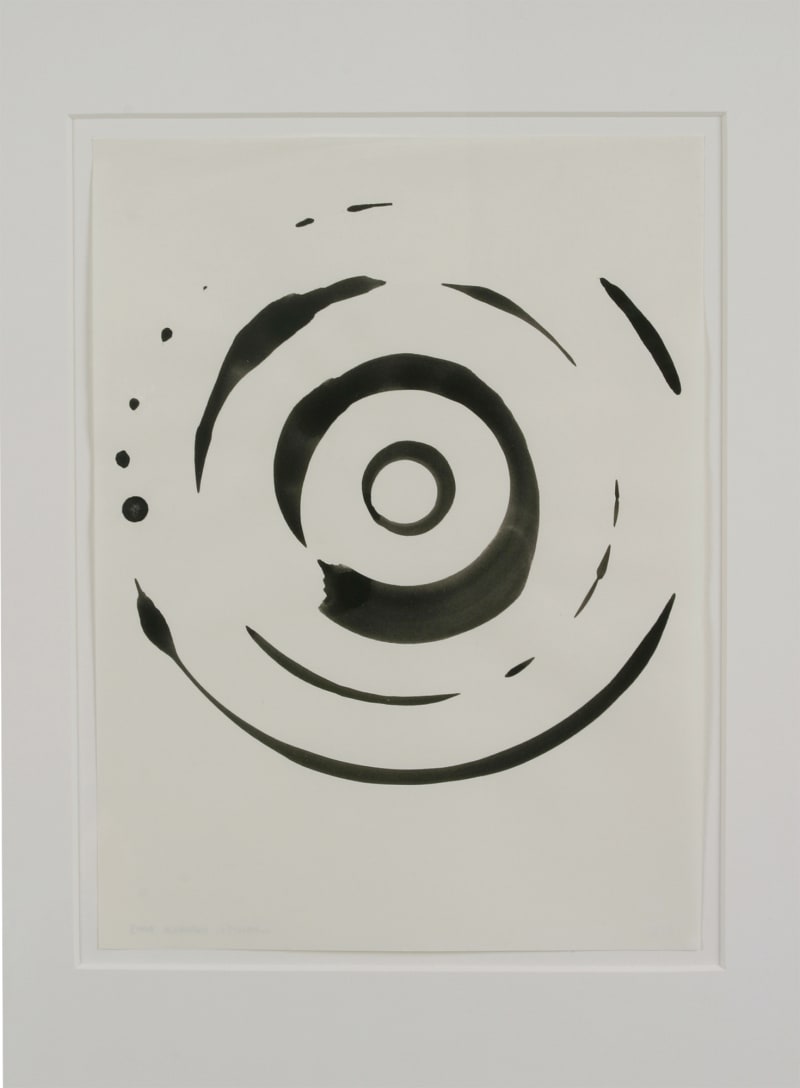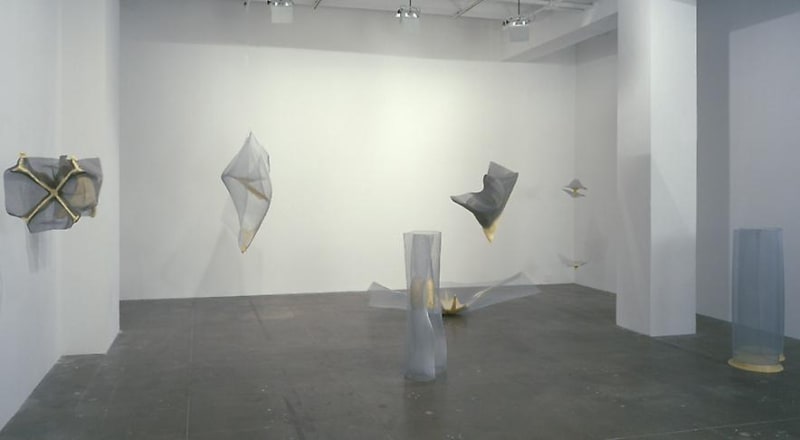Overview
Marian Goodman Gallery is pleased to announce an exhibition of new work by Gabriel Orozco which will open to the public on Wednesday, October 22th and will be on view through Saturday, November 22nd. Gallery hours are Monday through Saturday, from 10 am to 6 pm.
On exhibit will be a series of works that continue Orozco's approach to physical and natural phenomena in the making of sculpture. In the new work the artist investigates the relationship of matter to forces of nature, creating experimental objects using expansive polyurethene foam which generates diverse transformations—liquid to solid, flatness to relief, contraction to expansion. Challenging the static as well as the hand-made object, the works are spun from contingencies, morphing into tri-dimensions from the tension of a screened surface, or from the laws of gravity, time, and space. Orozco's application of motion to matter results in an exploration of volume and emptiness, density and fluidity, with the works resembling fossils, bones, or skeletal structures on the one hand, and a futuristic landscape, both aquatic and aerodynamic, on the other.
Gabriel Orozco
October 22 - November 22, 2003
Opening Reception: Wednesday, October 22, 6–8 pm
Marian Goodman Gallery is pleased to announce an exhibition of new work by Gabriel Orozco which will open to the public on Wednesday, October 22th and will be on view through Saturday, November 22nd. Gallery hours are Monday through Saturday, from 10 am to 6 pm.
On exhibit will be a series of works that continue Orozco's approach to physical and natural phenomena in the making of sculpture. In the new work the artist investigates the relationship of matter to forces of nature, creating experimental objects using expansive polyurethene foam which generates diverse transformations—liquid to solid, flatness to relief, contraction to expansion. Challenging the static as well as the hand-made object, the works are spun from contingencies, morphing into tri-dimensions from the tension of a screened surface, or from the laws of gravity, time, and space. Orozco's application of motion to matter results in an exploration of volume and emptiness, density and fluidity, with the works resembling fossils, bones, or skeletal structures on the one hand, and a futuristic landscape, both aquatic and aerodynamic, on the other.
A recent point of departure for these works are the mixiotes which were exhibited in Orozco's one-man show at the gallery in 2001: fragile, dancing sculptures strung from the ceiling and made from an assortment of materials such as cactus leaf, clear plastic bags and found rubber balls. The new work finds an antecedent here, in organic forms which allude to nature resembling bodies, flowers, or fruits, as well as in earlier works such as Yielding Stone (1992), Lost Line (1993) or Orange Without Space (1993) whose history and circular infinitudes are retraced in "Spume Streams."
Gabriel Orozco's recent exhibitions have included a work made for the 50th Venice Biennale (2003) included as part of the exhibition Ritardi e Rivoluzione, titled Shade Between Rings of Air, a sculptural installation made in relation to Carlo Scarpa's 1952 concrete roof for the Italian Pavilion in Venice
which presents a beautiful axis of reflection – between space and time; between the presence of the old and the new; the aged and worn and the platonic ideal. This summer a solo exhibition, The Weight of the Sun, was presented at The Douglas Hyde Gallery, Trinity College, Dublin. Other solo shows have recently been seen at the Museo de Arte Contemporaneo de Oaxaca, Oaxaca, Mexico, and the CAV, Centro de Artes Visuais, Coimbra, Portugal. Upcoming one-man exhibitions include a survey of Orozco's photographic work scheduled to open at the Hirshhorn Museum & Sculpture Garden in Washington, D.C. in the summer of 2004; as well as an exhibition to be held at the Serpentine Gallery, London; and at the Museum of Anthropology, Mexico City, Mexico. Orozco's work will be included in several group exhibitions this year, including Work Ethic, opening in October at the Baltimore Museum of Art, which will later travel to Des Moines Art Center in 2004, and the Wexner Center for the Arts in 2004-05; Common Wealth at Tate Modern, London, opening also in late October and on view through December 2003; and Drawing Modern: Works from the Agnes Gund Collection at the Cleveland Museum of Art, Ohio.
One-man exhibitions include a retrospective of his work shown in 2000-2001 at The Museum of Contemporary Art, Los Angeles, which toured to two institutions in Mexico, the Museo Internacional Rufino Tamayo, Mexico City and the Museo de Arte Contemporaneo de Monterey, Monterey. Other solo shows at institutions include Portikus, Frankfurt; The Philadelphia Museum of Art; ARC/Musée Nacionale d'Art Moderne de la Ville de Paris; the Stedelijk Museum, Amsterdam; the Kunsthalle Zurich (which travelled to The ICA, London and the Staalichen Museum am Kulturforum, Berlin); "The Empty Club", at Art Angel Projects, London; the MCA, Chicago; The Museum of Modern Art, New York; and the Kanaal Art Foundation, Kortrujk, Belgium. His work has been included in the recent 50th Venice Biennale, 2003 and the 45th Venice Biennale, 1993; Documenta 11 and Documenta 10, Kassel; the 1997 and 1995 Whitney Biennals, New York; Skuptur Projekte, Münster; the 1999 Carnegie International, Pittsburgh; the 2001 Yokohama International Triennial of Contemporary Art, Japan; the Istanbul Biennial, Turkey; and Ars 01 at the Museum of Contemporary Art, Helsinki.
Born in Jalapa, Veracruz in 1962, Gabriel Orozco studied at Escuela Nacional de Arte Plasticas, U.N.A.M in Mexico City between 1981 and 1984, and later in Spain at Ciculo de Bellas Artes, Madrid from 1986 to 1987. In 1995 he was a DAAD artist in residence in Berlin, Germany.
